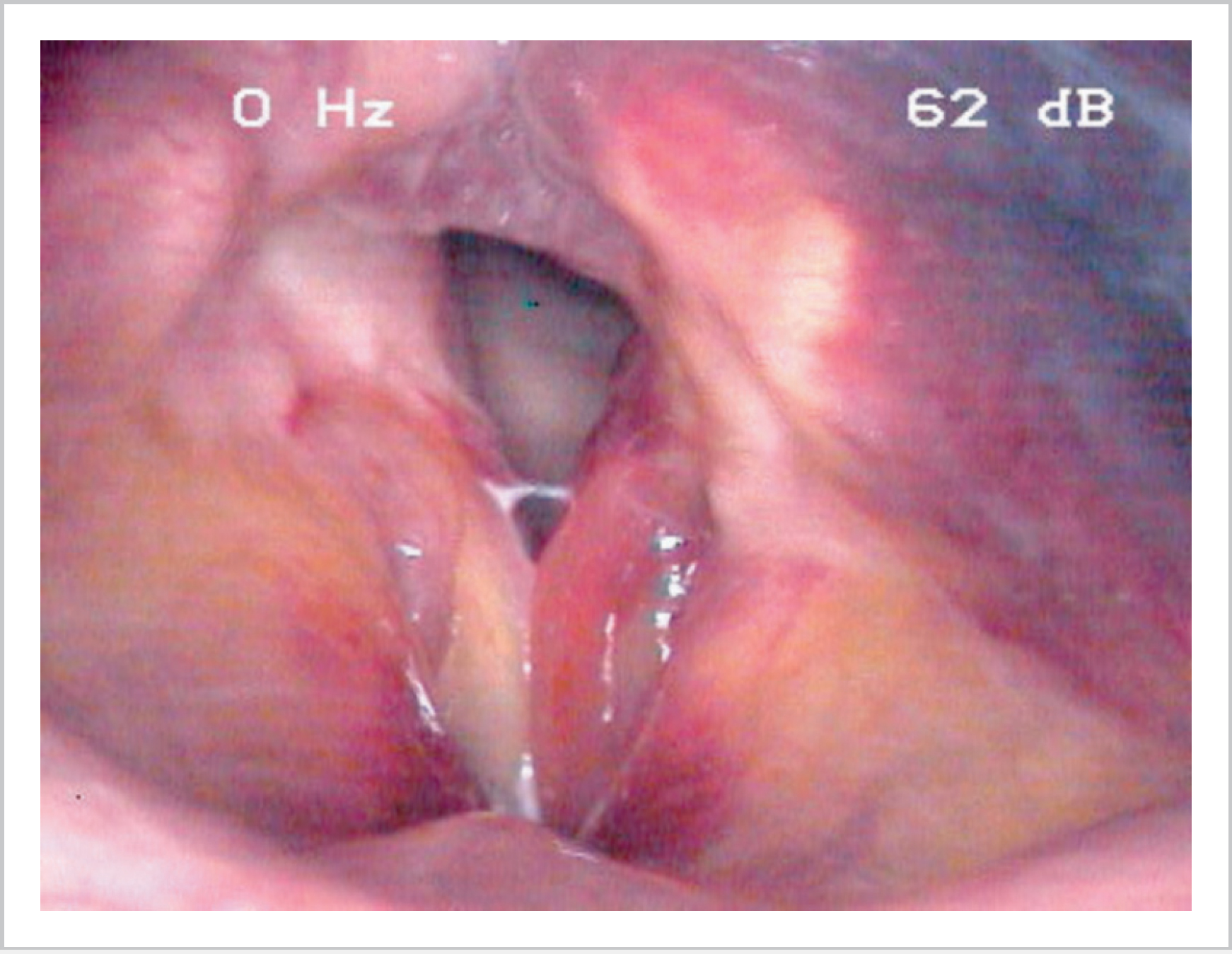54 Neck, Laryngeal, and Tracheal Trauma and Stenosis • Type: • Site: • Oedema • Haematoma (Fig. 54.1) • Web: abrasions at anterior commissure • Glottic incompetence • Loss of U-shaped rings—exertional dyspnea • Granuloma formation • Hyoid # (± bursa formation) • Thyroid cartilage and arytenoids—depends on calcification: • Cricotracheal separation—usually results in fatality • Symptoms of upper airway injury • Signs of upper airway injury – Great vessels – Cervical spine – Chest—hemothorax/pneumothorax/emphysema/distant oesophageal tears • Incomplete bronchial transaction—apex of collapsed lung sits at level of hilum • Deep cervical emphysema—radiolucent line along prevertebral fascia • Peribronchial air • Sudden obstruction along course of air-filled bronchus • Fracture of 1st rib/scapula/sternum suggests severe injury with airway trauma Remember airway, breathing and circulation and also C-spine! • Oedema only—bed rest • No major mucosal laceration with visualization of tracheal lumen—ETT • Immediate threat of loss of airway—tracheostomy • Associated bronchial injury—intubate uninjured bronchus before thoracotomy • Emergency thoracotomy for great vessel damage • General supportive measures:
54.1 Classification of Laryngeal Trauma
 Penetrating
Penetrating
 Blunt
Blunt
 High velocity
High velocity
 Low velocity
Low velocity
 Supraglottis
Supraglottis
 Glottis
Glottis
 Subglottis
Subglottis
 Hyoid
Hyoid
 Cricoarytenoid
Cricoarytenoid
 Cricothyroid
Cricothyroid
54.2 Soft Tissue Injury
 Supraglottic
Supraglottic
 Paraglottic
Paraglottic
 Reinke space
Reinke space
 Arytenoid fixation
Arytenoid fixation
 Resorption of the thyroarytenoid muscle
Resorption of the thyroarytenoid muscle
 Atrophy of the cord
Atrophy of the cord
 Recurrent laryngeal nerve palsies
Recurrent laryngeal nerve palsies
54.3 Injuries to Skeletal Framework (High-Velocity Blunt)
 # Line down thyroid prominence
# Line down thyroid prominence
 Elastic cartilage—pre-epiglottic space bleeding with posterior displacement of epiglottis
Elastic cartilage—pre-epiglottic space bleeding with posterior displacement of epiglottis
 Calcified cartilage—detachment of tendon of ant. commissure and petiole of epiglottis
Calcified cartilage—detachment of tendon of ant. commissure and petiole of epiglottis
 Compressed calcified thyroid cartilage has to be reconstituted and stented
Compressed calcified thyroid cartilage has to be reconstituted and stented
54.4 Clinical Features of Upper Airway Injury
 Dysphonia
Dysphonia
 Dyspnea
Dyspnea
 Odynophagia
Odynophagia
 Neck pain
Neck pain
 Stridor
Stridor
 Cervical ecchymosis
Cervical ecchymosis
 Surgical emphysema in the neck
Surgical emphysema in the neck
 Loss of thyroid prominence
Loss of thyroid prominence
 VC fixation
VC fixation
 Gastric dilatation
Gastric dilatation
 Associated damage:
Associated damage:
54.5 CXR Signs
54.6 Management
54.6.1 Laryngeal Framework Damage
 Bed rest and voice rest
Bed rest and voice rest
Stay updated, free articles. Join our Telegram channel

Full access? Get Clinical Tree



